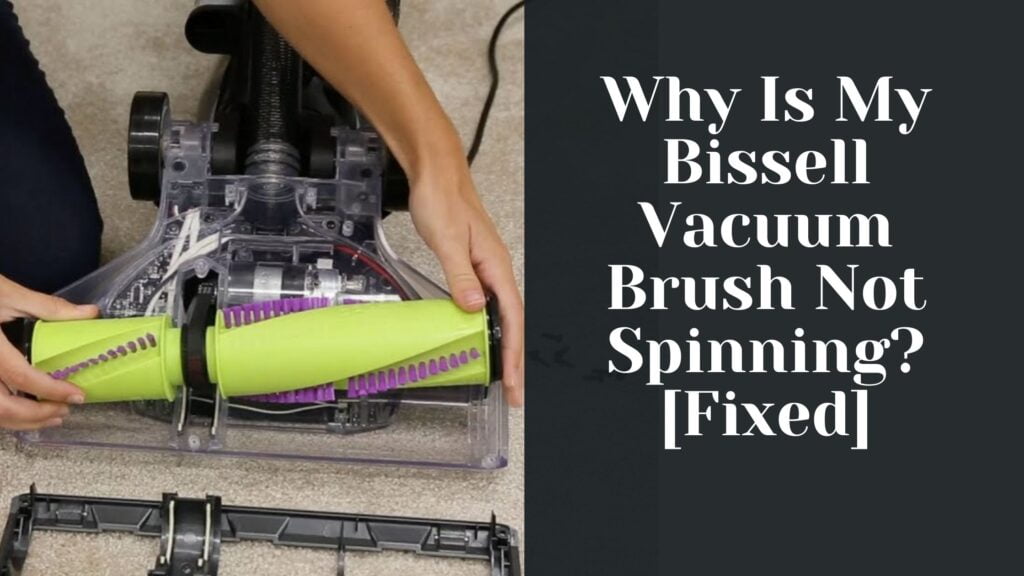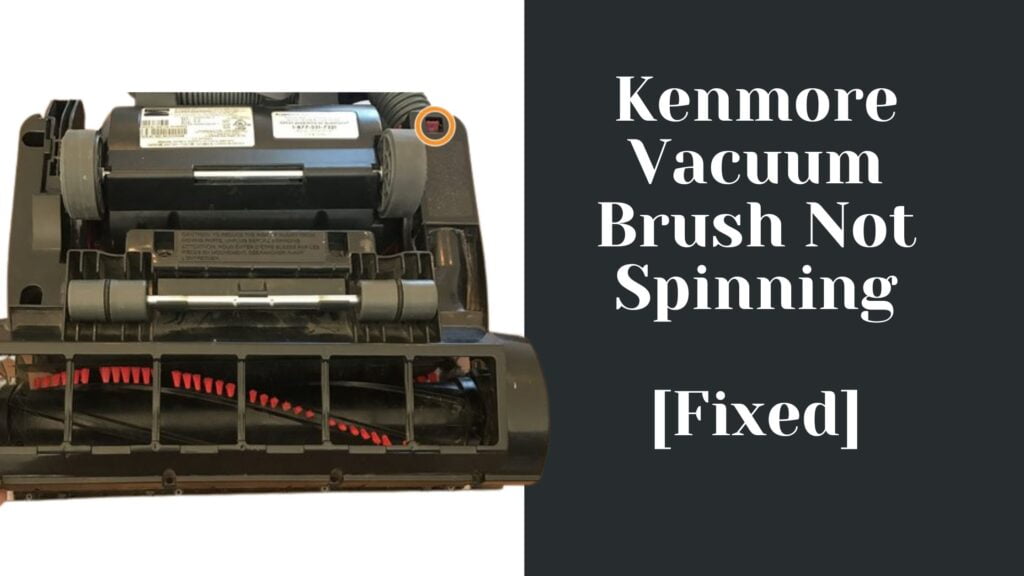If you own a Shark vacuum, you know how important it is to have a reliable and powerful cleaning tool. However, if you’re experiencing a loss of suction, it can be frustrating and time-consuming to figure out the cause and fix the issue. Fortunately, there are several common reasons why a Shark vacuum may stop sucking, and many of them can be resolved with simple troubleshooting steps.
One of the most common reasons for a Shark vacuum not sucking is a clogged filter or hose. Over time, dirt, dust, and debris can build up in these areas, restricting the flow of air and reducing suction power. Another potential cause is a full dustbin or dirt canister, which can prevent the vacuum from picking up additional debris. If you’re experiencing these issues, there are several steps you can take to troubleshoot and resolve the problem.
In this article, we’ll explore some of the most common reasons why a Shark vacuum may stop sucking and provide step-by-step instructions for troubleshooting and fixing the issue. Whether you’re dealing with a clogged filter, a full dustbin, or another problem, we’ll help you get your Shark vacuum back to peak performance in no time.
Understanding the Problem
If you are experiencing suction issues with your Shark vacuum, you are not alone. Losing suction or suction power is one of the most common problems that vacuum cleaners can develop, and Shark vacuums are no exception. In this section, we will discuss the possible causes of losing suction and what you can do to solve the problem.
One of the primary reasons for losing suction is a clogged filter or dustbin. When the filter or dustbin is full, the vacuum cleaner cannot suck up any more dirt or debris. Therefore, it is crucial to empty the dustbin or replace the filter regularly. If the filter is washable, make sure to clean it thoroughly and let it dry before using it again.
Another possible cause of losing suction is a blockage in the hose or brush roll. Dirt, hair, and debris can get stuck in the hose or brush roll, preventing the vacuum cleaner from picking up any more dirt. To solve this problem, you can use a long, thin object like a coat hanger or a broomstick to remove the blockage. You can also detach the hose or brush roll and clean them thoroughly.
If the above solutions do not work, the problem might be with the motor or the vacuum cleaner’s overall design. In some cases, the vacuum cleaner might not be powerful enough to pick up certain types of dirt or debris. In this case, you might need to upgrade to a more powerful model or consider using a different type of vacuum cleaner.
In conclusion, losing suction is a common problem that can occur with any vacuum cleaner, including Shark vacuums. However, with the right maintenance and troubleshooting, you can solve the problem and keep your vacuum cleaner working efficiently.
Common Causes of Suction Loss
If your Shark vacuum is not sucking up dirt and debris as it should be, there are several common causes that you can check for. Here are some of the most likely culprits:
Blockages
Blockages are a common cause of suction loss in Shark vacuums. Dirt, hair, and other debris can get stuck in the vacuum’s hoses, brush roll, or other parts, preventing air from flowing through the machine. To check for blockages, follow these steps:
- Turn off and unplug the vacuum.
- Remove the dust cup and empty it.
- Check the hoses and brush roll for any visible blockages.
- Use a long, thin object like a coat hanger or a pipe cleaner to remove any blockages you find.
Dirty Filters
Dirty filters can also cause suction loss in Shark vacuums. Over time, the vacuum’s filters can become clogged with dirt and debris, reducing the airflow through the machine. To check for dirty filters, follow these steps:
- Turn off and unplug the vacuum.
- Remove the dust cup and empty it.
- Remove the filters from the vacuum.
- Clean the filters by tapping them gently against a trash can or washing them with water.
- Let the filters dry completely before reinstalling them.
Shark vacuums have several types of filters, including felt filters, foam filters, HEPA filters, and air filters. Check your vacuum’s user manual to see which filters your machine uses and how to clean them.
Faulty Motor
If your Shark vacuum has a faulty motor, it may not be able to generate enough suction to pick up dirt and debris. Signs of a faulty motor include unusual noises, burning smells, and reduced suction power. If you suspect that your vacuum’s motor is faulty, you may need to take it to a professional for repair or replacement.
Cracks and Tears
Cracks and tears in the vacuum’s hoses, brush roll, or other parts can also cause suction loss. Check your vacuum’s parts for any visible damage and replace any parts that are cracked or torn.
By checking for these common causes of suction loss, you can help keep your Shark vacuum running smoothly and picking up dirt and debris effectively.
Examining Your Shark Vacuum
When your Shark vacuum stops sucking, it can be frustrating. However, before you panic and call a repairman, there are a few things you can do to troubleshoot the problem. Here are some steps to take when examining your Shark vacuum.
Checking the Hose
The first thing to check is the hose. A clogged hose can prevent your vacuum from working properly. To check the hose, detach it from the vacuum and inspect it for any blockages. If you find a blockage, remove it using a long, thin object such as a coat hanger or a broom handle. If the hose is not clogged, move on to the next step.
Inspecting the Brush Roll
The brush roll is the part of the vacuum that spins and picks up dirt and debris. If the brush roll is not working correctly, your vacuum may not be able to pick up dirt effectively. To inspect the brush roll, turn off the vacuum and remove the brush roll cover. Look for any tangled hair or debris around the brush roll. If you find anything, remove it using a pair of scissors or a brush.
Assessing the Dust Cup
The dust cup is where the dirt and debris collected by the vacuum is stored. If the dust cup is full, your vacuum may not be able to pick up any more dirt. To assess the dust cup, detach it from the vacuum and empty it. If the dust cup is not full, move on to the next step.
Evaluating the Canister
The canister is the part of the vacuum that holds the motor and other important parts. If the canister is not attached correctly, your vacuum may not work correctly. To evaluate the canister, detach it from the vacuum and inspect it for any damage. If the canister is damaged, you may need to replace it. If the canister is not damaged, reattach it to the vacuum and try using the vacuum again.
By following these steps, you can troubleshoot most problems with your Shark vacuum. If you are still having problems after following these steps, you may need to call a repairman.
Step-by-Step Guide to Fixing Your Shark Vacuum
If you’re experiencing a loss of suction with your Shark vacuum, don’t worry. There are several things you can do to fix it. Here is a step-by-step guide to help you troubleshoot and repair your Shark vacuum.
Cleaning Blockages
The first thing you should do is to check for any blockages in your Shark vacuum. Blockages can occur in the hose, brush roll, or dustbin. Here’s how to clean them:
- Turn off your Shark vacuum and unplug it from the power source.
- Remove the hose from the vacuum and check for any blockages. Use a long object like a broomstick to push out any debris that may be stuck in the hose.
- Check the brush roll for any tangles or blockages. Use scissors or pliers to remove any debris that may be stuck in the brush roll.
- Empty the dustbin and check for any blockages. Use a long object like a broomstick to push out any debris that may be stuck in the dustbin.
Filter Maintenance
The filters in your Shark vacuum are essential to maintaining good suction. Over time, they can become clogged with dirt and debris. Here’s how to maintain your filters:
- Remove the filters from your Shark vacuum. Refer to your owner’s manual for instructions on how to do this.
- Clean the filters by tapping them gently against a hard surface or by washing them with water. Allow them to air dry completely before replacing them.
- Replace the filters if they are damaged or worn out.
Motor Repair
If your Shark vacuum is still not sucking after cleaning the blockages and maintaining the filters, the problem may be with the motor. Here’s how to repair the motor:
- Turn off your Shark vacuum and unplug it from the power source.
- Remove the motor cover and check for any damage or wear and tear on the motor.
- Replace the motor if it is damaged or worn out.
Sealing Cracks and Tears
If your Shark vacuum is still not sucking after cleaning the blockages, maintaining the filters, and repairing the motor, the problem may be with cracks or tears in the vacuum’s body. Here’s how to seal them:
- Turn off your Shark vacuum and unplug it from the power source.
- Use a sealant or tape to cover any cracks or tears in the vacuum’s body.
- Allow the sealant or tape to dry completely before using your Shark vacuum again.
By following these steps, you can troubleshoot and repair your Shark vacuum and get it back to working like new again.
Preventing Future Suction Problems
If you want to avoid future suction problems with your Shark vacuum cleaner, there are a few things you can do to keep your vacuum running smoothly. Here are some tips to help you prevent future suction problems.
Regular Cleaning
One of the most important things you can do to prevent suction problems is to clean your vacuum regularly. This includes cleaning the dustbin, filters, and brush roll. Here are some tips for cleaning your Shark vacuum:
- Empty the dustbin after every use.
- Wash the filters every three months.
- Clean the brush roll regularly to remove hair and debris.
By keeping your vacuum clean, you can ensure that it will continue to work at its best.
Proper Vacuum Use
Another way to prevent suction problems is to use your Shark vacuum properly. Here are some tips for using your vacuum:
- Use the right attachment for the job. For example, use the crevice tool for tight spaces and the upholstery tool for furniture.
- Don’t push the vacuum too hard. Let the vacuum do the work for you.
- Use the vacuum on the right setting for the surface you are cleaning.
By using your vacuum properly, you can avoid putting unnecessary strain on the motor and other components.
Routine Maintenance
Finally, routine maintenance is essential for preventing suction problems. Here are some tips for maintaining your Shark vacuum:
- Check the hoses and connections regularly for blockages.
- Replace the filters and brush roll as needed.
- Have your vacuum serviced by a professional every year.
By maintaining your vacuum, you can ensure that it will continue to work at its best and avoid costly repairs.
In summary, regular cleaning, proper vacuum use, and routine maintenance are all important for preventing suction problems with your Shark vacuum cleaner. By following these tips, you can keep your vacuum running smoothly and avoid common issues that can arise with vacuum cleaners.
Comparing Shark Vacuums with Other Brands
When it comes to vacuum cleaners, Shark is a popular brand known for its powerful suction and innovative features. But how does Shark compare to other brands in the market? Let’s take a closer look.
Shark vs. Dyson
Dyson is another popular brand known for its high-end vacuum cleaners. While both Shark and Dyson offer powerful suction and advanced features, there are some key differences between the two.
One major difference is the price point. Dyson vacuums tend to be more expensive than Shark vacuums, although they often come with more advanced features. However, Shark vacuums are still a great option for those looking for a powerful and reliable vacuum at a more affordable price point.
Another difference is the design. Dyson vacuums are known for their sleek and modern design, while Shark vacuums tend to have a more traditional look. However, both brands offer a variety of models with different designs to choose from.
Shark Navigator vs. Shark Rotator
Within the Shark brand, there are also different models to choose from. Two popular options are the Shark Navigator and the Shark Rotator.
The Shark Navigator is a lightweight and versatile option, ideal for those who need to clean a variety of surfaces. It comes with a detachable canister and a variety of attachments for cleaning different surfaces and hard-to-reach areas.
The Shark Rotator, on the other hand, is a more heavy-duty option with a larger capacity and more powerful suction. It also comes with a detachable canister and a variety of attachments, but is better suited for larger homes or those with more carpeted surfaces.
Shark vs. Robot Vacuums
Robot vacuums have become increasingly popular in recent years, offering a hands-free cleaning experience. While Shark does offer a robot vacuum option, how does it compare to other brands?
Compared to other robot vacuums on the market, Shark’s robot vacuum is a more affordable option. It still offers powerful suction and advanced features like voice control and mapping technology, but at a lower price point than some other brands.
However, it’s worth noting that robot vacuums may not be as effective as traditional vacuums when it comes to deep cleaning carpets or removing pet hair. They are better suited for daily maintenance cleaning or cleaning hard floors.
Overall, Shark vacuums offer a powerful and reliable option for those in need of a new vacuum cleaner. While there are differences between Shark and other brands, ultimately it comes down to personal preference and what features are most important to you.
Conclusion
In conclusion, a Shark vacuum not sucking is a common problem that can be caused by various factors. The lack of suction is simply a symptom, and you’ll need to inspect your vacuum cleaner thoroughly to determine which case it belongs to. Here are some of the possible causes of a Shark vacuum not sucking:
- Clogged hose, filters, or bag
- Air leaks
- Cord or battery issues
- Cracks or leaks in the vacuum cleaner
To fix the problem, you can try the following troubleshooting steps:
- Check the dustbin or dirt canister and make sure it is empty
- Inspect the hose, filters, and bag for any clogs and clean or replace them if necessary
- Check for any air leaks in the vacuum cleaner and repair or replace the affected parts
- If the cord or battery is the issue, replace them or charge them accordingly
- If there are any cracks or leaks in the vacuum cleaner, repair or replace the affected parts
It’s important to note that these troubleshooting steps are not exhaustive, and there may be other causes of a Shark vacuum not sucking. However, by following these steps, you can often fix the problem and get your vacuum cleaner back to working properly.
In summary, a Shark vacuum not sucking can be a frustrating problem, but it’s usually fixable with some troubleshooting. By inspecting your vacuum cleaner thoroughly and addressing any clogs, leaks, or other issues, you can often get it back to working properly and keep your floors clean and tidy.
Frequently Asked Questions
Why is my Shark vacuum making a loud noise but not picking up?
If your Shark vacuum is making a loud noise but not picking up, it could be due to a clog in the vacuum’s hose or filter. Check the hose and filter for any blockages and clean them if necessary. Another possible cause could be a worn-out brush roll, which can be replaced.
How do I troubleshoot my Shark vacuum if it’s not picking up?
If your Shark vacuum is not picking up, there are a few things you can try. First, check the vacuum’s hose and filter for any blockages and clean them if necessary. Make sure the brush roll is not tangled or worn out. If the problem persists, check the vacuum’s motor and belt for any issues. If you are still having trouble, contact Shark customer service for assistance.
What should I do if the motor on my Shark vacuum isn’t working?
If the motor on your Shark vacuum isn’t working, check to make sure the vacuum is plugged in and the power outlet is working. If the vacuum is still not working, check the motor and belt for any issues. If the motor or belt needs to be replaced, contact Shark customer service for assistance.
Why won’t my Shark vacuum turn on?
If your Shark vacuum won’t turn on, check to make sure the vacuum is plugged in and the power outlet is working. If the vacuum is still not turning on, check the vacuum’s motor and belt for any issues. If the motor or belt needs to be replaced, contact Shark customer service for assistance.
How can I fix my Shark vacuum if it’s making weird suction noises?
If your Shark vacuum is making weird suction noises, it could be due to a clog in the vacuum’s hose or filter. Check the hose and filter for any blockages and clean them if necessary. Another possible cause could be a worn-out brush roll, which can be replaced. If the problem persists, contact Shark customer service for assistance.
What should I do if the lift-away button on my Shark vacuum is stuck?
If the lift-away button on your Shark vacuum is stuck, try gently pulling up on the canister to release it. If the button is still stuck, check to make sure there are no obstructions preventing it from moving. If the problem persists, contact Shark customer service for assistance.


















